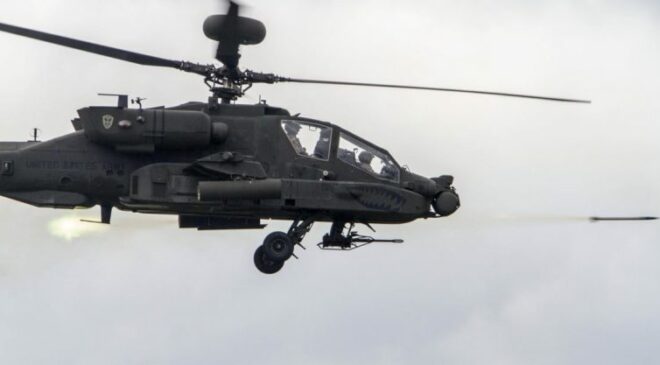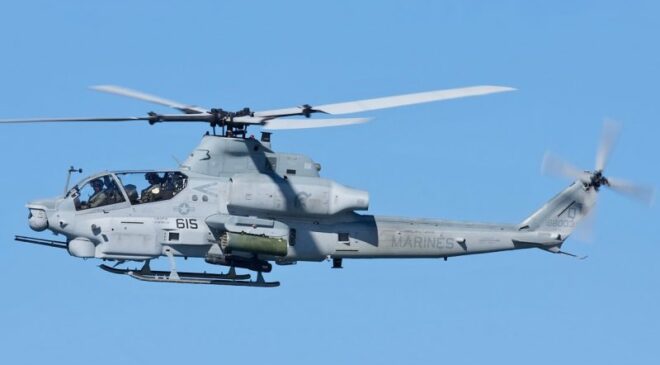Although helicopters have been used in combat since the end of the 40s, notably during the Korean War during which they played a decisive role for the first time in casualty evacuation missions and recovery of ejected pilots, it was not until 1967 that an armed helicopter specially designed for attack missions took part in an armed conflict. It was the American Bell AH-1 Cobra helicopter of the US Army in the context of the Vietnam War.
Since then, attack helicopters have established themselves as an essential tool in the inventory of modern armies, and the Mi-24 Hind, the AH-64 Apache and other Tigers actively participated in numerous conflicts, ranging from the Soviet intervention to Afghanistan to the first Gulf War, from the intervention in Libya in 2011 to the tensions between Ukraine and Russia just a few weeks ago.
Fast, maneuverable and powerfully armed, these devices know how to take advantage of terrain masking to approach their target and destroy them before receiving a response. Little by little, they replaced close air support aircraft in many armies.
With the arrival of new munitions, such as loitering munitions, and new sensors and communication tools, modern combat helicopters will see their performance further expand in the years to come, to continue to represent a key component of air combat.
AH-64E Apache (Boeing - United States)
In all fairness, we had to start this panel with the undisputed king of this category of aircraft, the Boeing AH-64 Apache, which today remains the most produced Western combat helicopter in the world, with 2400 examples, narrowly yielding only to the Soviet Mi-24 which peaked at 2650 aircraft produced.
However, initially, the Apache should never have seen the light of day. Indeed, it was only developed at the request of the US Army as part of its BIG 5 super program in 1972, after the abandonment of the AH-56 Cheyenne program, while the US Air Force took the party to develop the A-10 Thunderbolt II and the US Marine Corps the Harrier II, leaving the US Army isolated to develop its own rotary wing.
The competition saw the prototype Bell YAH-63 and the Hughes YAH-64 clash, the latter winning in almost all areas to the detriment of its competitor. Pre-production of the Apache began in 1981, and the first aircraft arrived in Europe from 1984, at the height of the Euromissile crisis.

Since then, the commercial and operational success of the AH-64 has never wavered, and despite its 40 years, it continues to receive orders in its most advanced version, the AH-64E.
It must be said that “the beast” has serious arguments to put forward, with a maximum take-off weight of more than 10 tonnes, its fully armored tandem Glass-cockpit, and its two GE T-700 turbines each developing more than 1900 hp of power, allowing it to carry five tonnes of payload, including pilots, fuel and ammunition.
On the armament side, it carries a very effective 30 mm M230 cannon supplied with 1200 rounds and coupled with the helmet sight of the weapons system officer located on the front seat of the aircraft, as well as a range of missiles, rockets and even additional tanks mounted on the 2 attack points of each of its wing stumps.
In anti-tank configuration, an AH-64E, equipped with an AN/APG-78 radar on mast, carries up to 16 AGM-114 Hellfire II missiles, giving it formidable firepower. In addition to the Hellfire, the Apache can fire Israeli Spike anti-tank missiles, Stinger air-to-air missiles, as well as 70mm rockets.
Despite its age, the AH-64 Apache remains the spearhead of the US Army's air combat force, as well as 16 armed forces around the world, including the United Kingdom, the Netherlands and Greece. in NATO, Japan and South Korea in the Pacific, Saudi Arabia, Israel, Qatar and Egypt in the Middle East. These last years, Britain, Australia and Morocco have also ordered the device from Boeing, which will remain in service for several more decades.
AH-1Z Viper (Bell – USA)
The final version of the AH-1 Cobra which was the first attack helicopter ever engaged in a conflict in 1967, Bell's Ah-1Z Viper no longer has much in common with the first versions of its ancestor. No more single-engine configuration and two-blade rotor, the Viper is now equipped with 2 General Electric T-700-GE-401C turbines developing 1800 hp each, for a maximum takeoff weight of 8,8 tons, and a four-blade rotor with like most modern helicopters.
However, the Viper does not deny its heritage, notably retaining a frontal section of barely more than one meter, making it particularly difficult to spot and target when facing the adversary.
This feature also allows its primary user, the US Marines Corps, to reduce the aircraft's footprint once the rotor is folded, when deployed from US assault ships.


The rest of this article is for subscribers only
The Classic subscriptions provide access to
all articles without advertising, starting at € 1,99.
Newsletter subscription
Register for the Meta-Defense Newsletter to receive the
latest fashion articles daily or weekly

